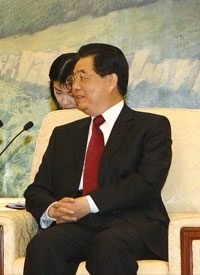
“The only way to fully restore America’s economic strength is to make long-term investments that will lead to new jobs, new industries, and a renewed ability to compete with the rest of the world,” said President Barack Obama in his Address to the Joint Session of Congress on Tuesday, February 24, 2009.
This remark by President Obama sounds like something a concerned American citizen who is struggling to keep his financial head above water might say. A “hurray” moment? Maybe not.
The “investments” the president is talking about — wind and solar power, universal healthcare, and better schools paid for with tax money, as opposed to infusions of capital by private entities to expand businesses — will not restore our country economically, even if they are as successful as Obama hopes they will be (which by itself is very, very unlikely).
All else being successful, two things would ensure failure of an economic recovery: the U.S. regulatory burden and fraud.
Every government regulation is a hurdle to be overcome by businesses. Because of the United States’ multiplicative government regulations and its litigiousness, the U.S. regulatory compliance burden was 31.7 percent higher than our nine largest trading partners in 2006 (gone up from 22.4 percent higher than our competitors in 2003), according the National Association of Manufacturers. To get our country pointed in the right direction, we would need to trim away or revamp every single state or federal law that interferes with or slows the start-up of a new business or that imposes an unnecessary cost on businesses after they are up and running. The present administration plans more regulations and taxes, as do many state governments.
Without such a reduction effort, the United States can count on the profits from producing wind and solar equipment going to a country that is a lower-cost producer than the United States. Jobs won’t materialize here. In this case, like so many others, the past foretells the future. Between 2001 and 2006, not one manufacturing payroll classification in the United States added a new job, according to Former Assistant Secretary of the Treasury Paul Craig Roberts. U.S. manufacturers lost 2.9 million jobs. And manufacturers have continued the downward slide since that time.
Exacerbating the problem is the fact that if a new technology is discovered that would make solar and wind power viable to re-power America (they are not viable now because they are intermittent power sources in need of a way to store electricity for when they are not producing), it is likely that its design would be pirated by foreign competitors, with little objection from the United States. (Even when it became widely known that the Chinese had stolen nuclear weapons technology from the United States, no real penalty ensued against China.)
So how will a new discovery play out, considering the fact that the United States does little to enforce patents or protect the country from wholesale theft of technology?
If, for example, the U.S. government funds a program whereby someone discovers a way to store solar and wind energy in large scale, making wind or solar energy viable, there’s nothing to stop the Chinese from paying the discovering company to build a plant in China so that China could pirate the plans or build its own variations, meaning Chinese electricity costs and overall product manufacturing costs will still be below that of the United States, meaning that the United States will still not have an edge in trade and companies will not move here or expand manufacturing here.
If any new invention is small in scale, there likely won’t even be a need for a country like China to steal the product; the manufacturer will have the product built there anyway (or in a country of a similar low-cost producer). Or if the discovering company is loyal to the United States, the Chinese will simple ignore U.S. patents, copy the product, and ship it throughout the world. They already do it now, with little fear of retaliation from either the United States or the European Union.
In 2004, Bloomberg.com reported: “International companies are losing $60 billion a year because of piracy in China, according to the U.S. government.” And the problem has been growing exponentially. Between 1998 and 2006, the number of counterfeit goods seized in the E.U. rose from 10 million to 103 million. 60 Minutes reported that the day a U.S. company releases a new product, a Chinese company “can purchase one, and within seven days, using computer assisted design and their modern facilities, begin cranking out counterfeits.” The U.S. companies soon start getting “returns” of faulty equipment from users, which, of course, are defective because they are not the real thing.
In 2007, China said that it would work with the United States to ferret out the creators of pirated goods, but in fiscal year 2008 “seizures totaled more than $272.7 million in counterfeit and pirated goods, a 38 percent increase in domestic value over FY 2007.” And the United States only inspects a tiny fraction of the imports that arrive in our country. Pirated goods included electrical goods, semi-conductors, computer hardware, sunglasses, pharmaceuticals, and perfume. China was the number one source of seized goods.
U.S. makers of movies, music, and software won a suit in 2009 at the WTO against China for pirating their goods, but no penalty has been forthcoming, and it is likely any penalty that may be issued would not equal the profits the Chinese accrue by pirating the goods. We need to look after our own concerns, and we’re not doing it. Until we do, no “new technology” will save us.
— Photo: AP Images


